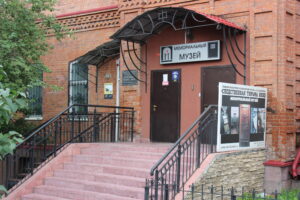As I begin the academic year of my sabbatical, I will be presenting on my research at Dalhousie University in Halifax, N.S.
I completed my undergraduate degree in History and Russian Studies at Dalhousie in the year 2000, so it’s exciting to be presenting at the department (even if it has physically moved from some beautiful Victorian houses into a large, but cramped, academic building).
I’m particularly delighted to be part of the Stokes Seminar. The late Lawrence Stokes was one of favourite professors while at Dalhousie. I took German and Holocaust history courses with him, and was especially fond of the tangential stories he would tell related to certain historical figures and events.
at Dalhousie. I took German and Holocaust history courses with him, and was especially fond of the tangential stories he would tell related to certain historical figures and events.
The presentation is titled, “A Murder Most Siberian: The ‘Bad House,’ Crime, and Punishment in 1909 Tomsk.” It will build on my research around the murder of Ignatii Dvernitskii as I get closer (fingers crossed) to submitting this aspect of the project for publication. One of the main areas I’m trying to explore in the project, as a whole, is the importance of place/space… rather than a backdrop to the events, the place of the events (in this case the building at 44 Lenin Avenue) is of crucial importance. Was the “Bad House (нехороший дом),” as the building came to be known, destined for “bad” events?



 it is also my first publication dealing with contemporary Russia.
it is also my first publication dealing with contemporary Russia. ve a large discount: the paperback version is only $19.95 at the moment! UTP has been a pleasure to work with, so far. I already have one speaking engagement lined up to discuss my book: a talk at Wilfred Laurier University’s Centre for Military, Strategic and Disarmament Studies on Jan. 9, 2019. Details to follow, but you can also
ve a large discount: the paperback version is only $19.95 at the moment! UTP has been a pleasure to work with, so far. I already have one speaking engagement lined up to discuss my book: a talk at Wilfred Laurier University’s Centre for Military, Strategic and Disarmament Studies on Jan. 9, 2019. Details to follow, but you can also 